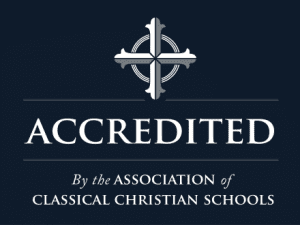Insights articles, written by Ambrose teachers and administrators, explore the many ways we are purposeful in achieving our goal of “graduating young men and women who possess the qualities of a deep and reasoned faith, a heartfelt moral compass, a strong command of language, are well-read, well-rounded, and appreciate beauty.”
 Our Educational Keystone – The Senior Trip
Our Educational Keystone – The Senior Trip
by Chris Browne
Dean of the Upper School
In architecture, the keystone is the final, finishing stone in an arch that locks all the remaining stones into place and allows the arch to bear weight. We have an educational equivalent here at the Ambrose School: the senior trip. Each October, our seniors travel together through Italy, France, and England, and experience firsthand many of the key historical sites, great works of art, and architectural landmarks that they studied during their careers here.
The senior trip, just like the keystone, brings all those years of study together and locks them into place. It is purely academic (in the negative sense) to read of the conversion of Constantine, the first Christian emperor; however, suddenly all the hours of study come to life when students see the Mulvian Bridge where Constantine’s conversion took place, when they walk through the Roman Forum in the shadow of his triumphal arch, and when they visit the Capitoline Museum and see the remains of Constantine’s colossal statue, with eyes gazing  heavenward in acknowledgement of God who gave him the victory. The same can be said of seeing the Colosseum, Notre Dame, the Louvre, Westminster Abbey, the Churchill War Rooms, and other sites and landmarks too numerous to count.
heavenward in acknowledgement of God who gave him the victory. The same can be said of seeing the Colosseum, Notre Dame, the Louvre, Westminster Abbey, the Churchill War Rooms, and other sites and landmarks too numerous to count.
But the senior trip is not only about visiting so many of the locations our students study. One of the more sinister effects of secular progressive education is that it serves to disconnect modern students from the religious and intellectual foundations of the western world. It is in visiting Rome, Florence, Paris, and London, that students are faced with the indisputable fact that the history of western civilization and the gospel of the Christian faith are inextricably intertwined. The two cannot be pulled apart, and at no time is that case made more convincingly than while walking through St. Peter’s Basilica, the Louvre, or the National Gallery. Upon experiencing one piece of beautiful art after another, crafted by the greatest geniuses that the western world has produced, each one telling some piece of the Christian story – from the life of King David, to the adoration of the magi, to the pieta – the magnitude and the majesty of the life of Christ and His influence on the world is made manifest in an incontrovertible way. It is no longer Mrs. Post, Mr. Velasco, or you as their parents telling students it is so; they see it firsthand.
 Finally, the senior year has the potential to be rough. Students are near the end of a long journey and the allure of the college years looms closer than ever. By taking the senior trip at the beginning of the year instead of the end, we pull many of these potential barriers up by the roots before they take hold in the senior year. The trip provides a common set of exceptional experiences for our seniors that unites the class in powerful bonds of friendship that cannot be replicated any other way. The trip is truly a once-in-a-lifetime opportunity, taken with classmates, many of whom have been integral parts of each others’ lives for a decade or more.
Finally, the senior year has the potential to be rough. Students are near the end of a long journey and the allure of the college years looms closer than ever. By taking the senior trip at the beginning of the year instead of the end, we pull many of these potential barriers up by the roots before they take hold in the senior year. The trip provides a common set of exceptional experiences for our seniors that unites the class in powerful bonds of friendship that cannot be replicated any other way. The trip is truly a once-in-a-lifetime opportunity, taken with classmates, many of whom have been integral parts of each others’ lives for a decade or more.
At The Ambrose School, we believe whole-heartedly in all the benefits of the senior trip. It is our sincerest hope that all seniors will go on tour with us, and we are committing our institutional weight to help make that a reality. As a community, we reserve most all fundraising for the junior class. We also diligently price-shop and look to find the right quality and cost balance. Furthermore, we are in the process of designating a portion of the operating budget to subsidize the cost of the trip, with the goal being a more manageable price tag for our families. We know the trip comes at a great cost to our families, and that is not a fact we take lightly.



